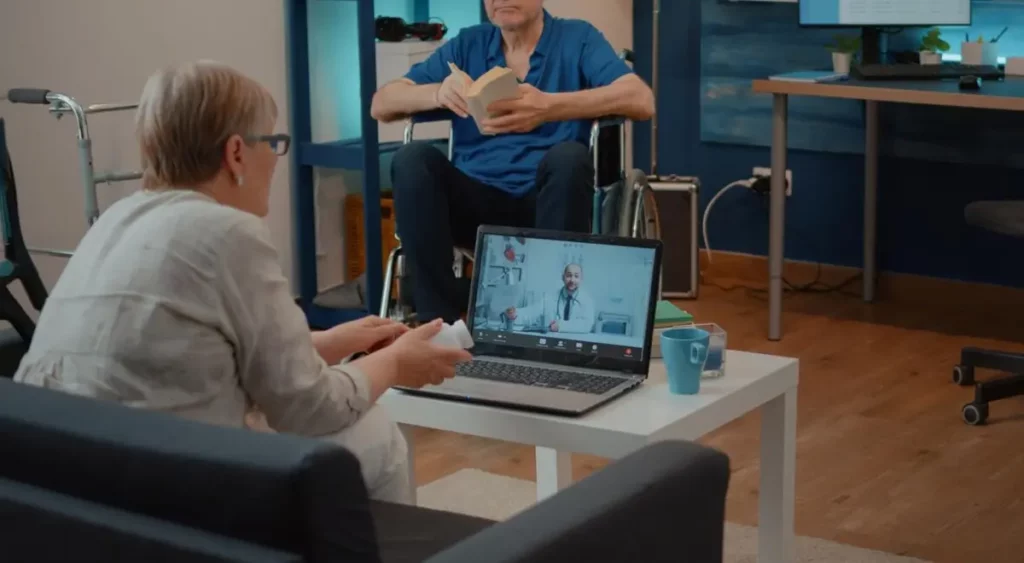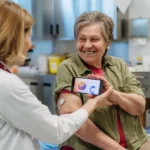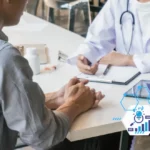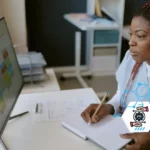How Remote Patient Monitoring (RPM) Helps In Improving Geriatric Care

Older population needs consistent monitoring and comprehensive care to age gracefully. With the advancement in healthcare technology, Remote Patient Monitoring (RPM) has become the most valuable platform providing continuous care to seniors, allowing them to get monitored and receive the much needed medical care from qualified healthcare professionals, right from the comfort of their homes.
In this blog post, we’ll explore the role of RPM in geriatric care and how HealthArc can help healthcare providers in delivering the best possible care to seniors.
Table of Contents
ToggleRole Of RPM in Geriatric Care
As seniors age, they often face a myriad of health issues related to aging, including chronic conditions, mobility restrictions, and functional decline. Traditional healthcare models may not provide the level of care and 24/7 monitoring needed to deal with these complex healthcare needs. This is where RPM comes in.
Comprehensive health monitoring for the elderly via an RPM platform is essential for ensuring their overall well-being and quality of life. It allows for continuous monitoring and management of ill-health conditions, thereby ensuring timely interventions and care coordination.
Benefits Of Remote Patient Monitoring In Geriatric Care
One of the key benefits of remote patient monitoring in geriatric care is its ability to support stress- free aging. Many older adults prefer to stay in their own homes as they age, as it provides a sense of independence and familiarity. However, this can sometimes be challenging if they require frequent medical attention or monitoring.
RPM allows seniors to receive the care they need without having to leave their homes, reducing the need for hospital visits or long-term care facilities. This is particularly beneficial for seniors with mobility restrictions or those with multiple chronic conditions.
Not only this, RPM can help to improve medication adherence by providing reminders and alerts. It can also track vital signs like blood pressure, weight, heart rate, blood glucose levels and other health metrics, allowing healthcare providers to monitor trends and make timely interventions as needed.
Another significant benefit includes, facilitating the communication between seniors and healthcare providers, enabling more timely and effective care management.
Use Of RPM in Geriatric Care
RPM in geriatric care can help reduce the course of chronic diseases and assure ongoing recovery after being discharged from an acute care facility. As a result, using RPM can help seniors in enhancing their quality of life by:
- Reducing the need for emergency hospital visits in seniors
- Enabling geriatric people to live freely in their chosen location
- Reducing the need for elderly patients to migrate into expensive care facilities
- Fulfilling the role of care providers in assisted living facilities
- Enhancing the quality of care for seniors
Since RPM is an at-home care delivery model, it offers a safe and convenient alternative for seniors to receive the care they need while reducing the risk of infection. It not only supports the health and well-being of older adults but also helps to protect them from potential health risks they may encounter; by ensuring they receive the much needed care at home only.
Boost Geriatric Care Delivery Outcomes With HealthArc
HealthArc is a leading provider of remote patient monitoring solutions that can help seniors and their caregivers to better manage their health. Our RPM platform allows for real-time monitoring and management of health conditions in seniors, with features such as remote vital health monitoring via devices connected to the software platform, medication reminders, and HIPAA compliant secure communication between patients and healthcare providers.
With HealthArc, seniors can have peace of mind knowing that they are being monitored and supported in their health journey, while caregivers can have the assurance that their loved ones are receiving the care they need.
Request a free demo or feel free to talk to our team at +201 885 5571 to know how our software can help with boosting geriatric care outcomes.
Frequently Asked Questions (FAQs)
RPM uses connected devices to keep an eye on important health information like blood pressure, glucose, weight, and heart rate from home and send it to doctors. For older adults, this means finding problems early, going to the hospital less often, and better managing chronic care.
PCM: For patients who have one chronic condition that is very dangerous and needs special care.
CCM is for people who have two or more long-term conditions that need ongoing coordinated care.
Both programs can be billed, but they offer different levels of care.
RPM is very advantageous for older people who have diabetes, high blood pressure, heart disease, COPD, or trouble moving around or are recovering from surgery. Ongoing monitoring helps control these conditions and stops problems from happening.
HealthArc and other well-known RPM platforms follow HIPAA and SOC 2 rules, use encryption, and have strict role-based access controls. Before using data, the patient must give their permission. If we take the right precautions, RPM does not violate patient privacy.
It helps older people live alone at home, cuts down on the stress of frequent hospital visits, and gives both patients and caregivers peace of mind. RPM also helps people take better care of their health.
No. HealthArc is meant to be easy to use right away. Providers receive devices that are ready to use and a simple dashboard. With little training, practices can start using RPM quickly, usually with a small pilot program before expanding.
No. RPM helps healthcare workers by automating routine monitoring and alerts, but clinical judgment and personal interaction are still crucial. Technology helps people work more quickly, but it can’t take the place of human care.
HealthArc collects:
- Blood pressure
- Glucose levels
- Weight
- Heart rate
- Oxygen saturation
- Physical activity metrics
This data provides a full picture of patient health trends.
Yes. HealthArc works with more than 21 of the most popular EHRs using HL7 and FHIR standards. This makes sure that data can move smoothly between RPM devices and the provider’s current health IT system.
- Simple, senior-friendly devices
- Medication reminders & alerts.
- Secure communication with providers
- Integration with care coordination workflows
- Support for caregivers and family members
Yes. HealthArc follows all HIPAA and SOC 2 rules. It protects patient information by encrypting data transmission and limiting who can access it.
Medicare, 22+ state Medicaid programs, and an increasing number of private payers reimburse RPM. Providers can bill using CPT codes 99453, 99454, 99457, and 99458.
Yes. Providers can bill both RPM and CCM in the same month as long as they record how much time they spend on each. CMS doesn’t let you “double count” minutes.
Under Medicare, clinical staff can furnish and manage RPM under the supervision of the billing provider. Billing must be done by a physician or qualified healthcare professional.
Providers can step in before problems get worse by finding unusual patterns early on. This makes it less likely that seniors will have to go to the ER or be readmitted to the hospital, which are common problems in geriatric care.
Yes. Seniors can stay in their homes longer, safely and independently, with regular monitoring. Providers and caregivers can also stay in touch through real-time health updates.
Most Recent Blogs
Categories
Related Blog
- October 23, 2025 | Read Time: 12 mins
How RPM Devices Improve Hypertension and Diabetes Outcomes in Medicare Populations
Remote patient monitoring (RPM) is transforming chronic care for Medicare beneficiaries. CMS...
Learn More- August 25, 2025 | Read Time: 13 mins
How Can “One Big Beautiful Bill” Boost RPM Programs by $50B?
The “One Big Beautiful Bill,” signed July 4, 2025, directs $50B over...
Learn More- August 22, 2025 | Read Time: 17 mins
HealthArc Platform vs RPM Software Solutions
Is your healthcare organization trying to pick a remote patient monitoring solution?...
Learn More


